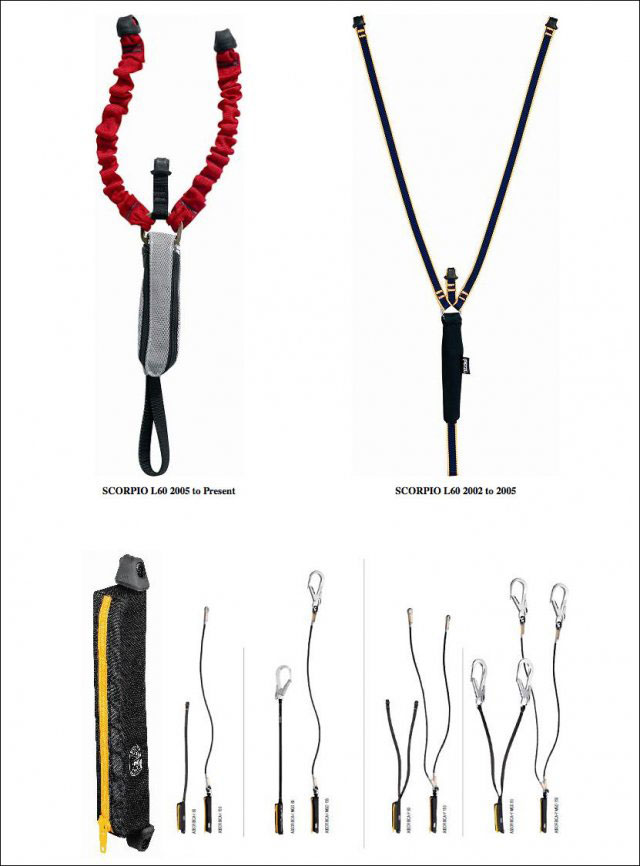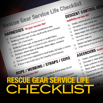 In this article, we want to provide some background on our experiences with users of rescue equipment, and why we feel proper training is so important. In the past 30 years, we’ve had the honor of having thousands of students attend our rescue training classes. Attitudes toward the statement “Do not use this equipment without proper training!” runs the gamut. It goes from “I never read the instructions,” to “I read, understand, and follow them to the T.” As our students come in all shapes, sizes, experience levels, attitudes, and needs, this is understandable. However, there’s one common denominator, they have come to us for training – and that’s our critical role.
In this article, we want to provide some background on our experiences with users of rescue equipment, and why we feel proper training is so important. In the past 30 years, we’ve had the honor of having thousands of students attend our rescue training classes. Attitudes toward the statement “Do not use this equipment without proper training!” runs the gamut. It goes from “I never read the instructions,” to “I read, understand, and follow them to the T.” As our students come in all shapes, sizes, experience levels, attitudes, and needs, this is understandable. However, there’s one common denominator, they have come to us for training – and that’s our critical role.
In many cases, an entire rescue team will show up for training with all their rescue gear in tow. They will then tell us that they have never received training on, nor really understand the proper use of their equipment.
Obviously, the primary concern is safety – safety of the users and the rescue subjects. Another critical point includes using the equipment contrary to the manufacturer’s instructions, which can lead to questions of liability. While some manufacturers provide complete and “easy to understand” instructions for use of their equipment, others provide just enough to get the box open.
Note: While it’s not an NFPA 1983 requirement, most manufacturers do include a statement concerning proper training prior to use. In fact, there is no NFPA requirement that instructions for use be provided by the manufacturer.
Here are some important questions to consider
What are the working load limitations of the item? If the gear is used for both planned work activities and for rescue activities, the maximum working loads may be different depending on the application. In some cases, additional rigging configurations are required for exceptional uses and heavy loads.
What are the effects of using the equipment in a variety of configurations? Are there load multipliers involved in certain configurations that need to be addressed? What are the effects of eccentric loads on the equipment? Many equipment items are to be used in static load applications only, and can be damaged or catastrophically fail if subjected to dynamic loads. Oftentimes these issues are not addressed in the user manual, but may be a need to know and understand consideration.
Also, using the item as part of a system may not be covered in the user manual. It’s important to understand this so that the equipment can be used to its full advantage – and to make sure it’s not subjected to unacceptable loads when used in a system. Many times the user manual provides bare bones instructions for use and doesn’t cover any instruction for use as part of a system. Nor does it cover the precautions for use as part of a system.
While it seems that more and more manufacturers are moving towards pre-built, engineered systems, it’s not always feasible (or advantageous) to use a pre-built system. However, it is very common to use multiple bits of hardware, software, and rope to create a “build-as-you-go” system that’s appropriate for the job. Without receiving the proper training on the compatibility of components used in a system, the user may be creating an unsafe condition or missing out on an opportunity for a more efficient solution. Or, miss out on the expanded use of equipment they already have in their cache.
In addition, more rescue gear is being designed to perform multiple functions. It’s not uncommon for us to hear students say something like, “Wow, I didn’t know it could do that, too!” Items that are put into the rescue equipment cache with the belief that it is designed to perform one function only, may be another opportunity lost.
Needless to say, we are big advocates of multifunction equipment. This provides for a smaller, lighter, and quite possibly less expensive rescue equipment cache. It also provides the ability to adapt a given rescue plan and shift the role of the equipment from one function to another. Typically, there are opportunities to use equipment in a manner that it can be quickly converted from one function to another as part of the plan. Without the proper training, this may not be obvious by simply reading the user manual.
Finally, how clear is the user manual in explaining criteria for inspection and removal from service? Depending on what’s provided by the manufacturer (i.e., text and graphics), a piece of equipment may require additional training for the proper inspection points and reasons for taking it out of service.
With that said, we hope it’s perfectly clear that the statement, “proper training is required prior to use” should be taken to heart. It always saddens us to hear of incidents where rescuers are hurt or injured while training for, or in the performance of their duties…especially when the root cause is listed as inadequate training. Hopefully, you are seeking quality training from a reputable training institution on the proper use of your equipment. Not just to satisfy a liability issue, but to keep your rescuers safe. It also allows them to understand and take full advantage of the equipment in their rescue cache – keeping it safe, simple, and effective!


 For our readers who may use Petzl GriGri 2’s, we wanted to make you aware of this recall. Please check the serial number of your device to see if it’s in this range. You will also need to contact Petzl as indicated below. As noted, this does not apply to the previous generation GriGri.
For our readers who may use Petzl GriGri 2’s, we wanted to make you aware of this recall. Please check the serial number of your device to see if it’s in this range. You will also need to contact Petzl as indicated below. As noted, this does not apply to the previous generation GriGri. ASTM F1740 provides very comprehensive guidelines for users of rescue rope. The title “Standard Guide for Inspection of Nylon, Polyester, or Nylon/Polyester Blend, or Both Kernmantle Rope” indicates it is specifically intended to guide the user in the inspection of these rescue ropes, and is not intended to be a guide in the selection and use of rescue ropes.
ASTM F1740 provides very comprehensive guidelines for users of rescue rope. The title “Standard Guide for Inspection of Nylon, Polyester, or Nylon/Polyester Blend, or Both Kernmantle Rope” indicates it is specifically intended to guide the user in the inspection of these rescue ropes, and is not intended to be a guide in the selection and use of rescue ropes.



